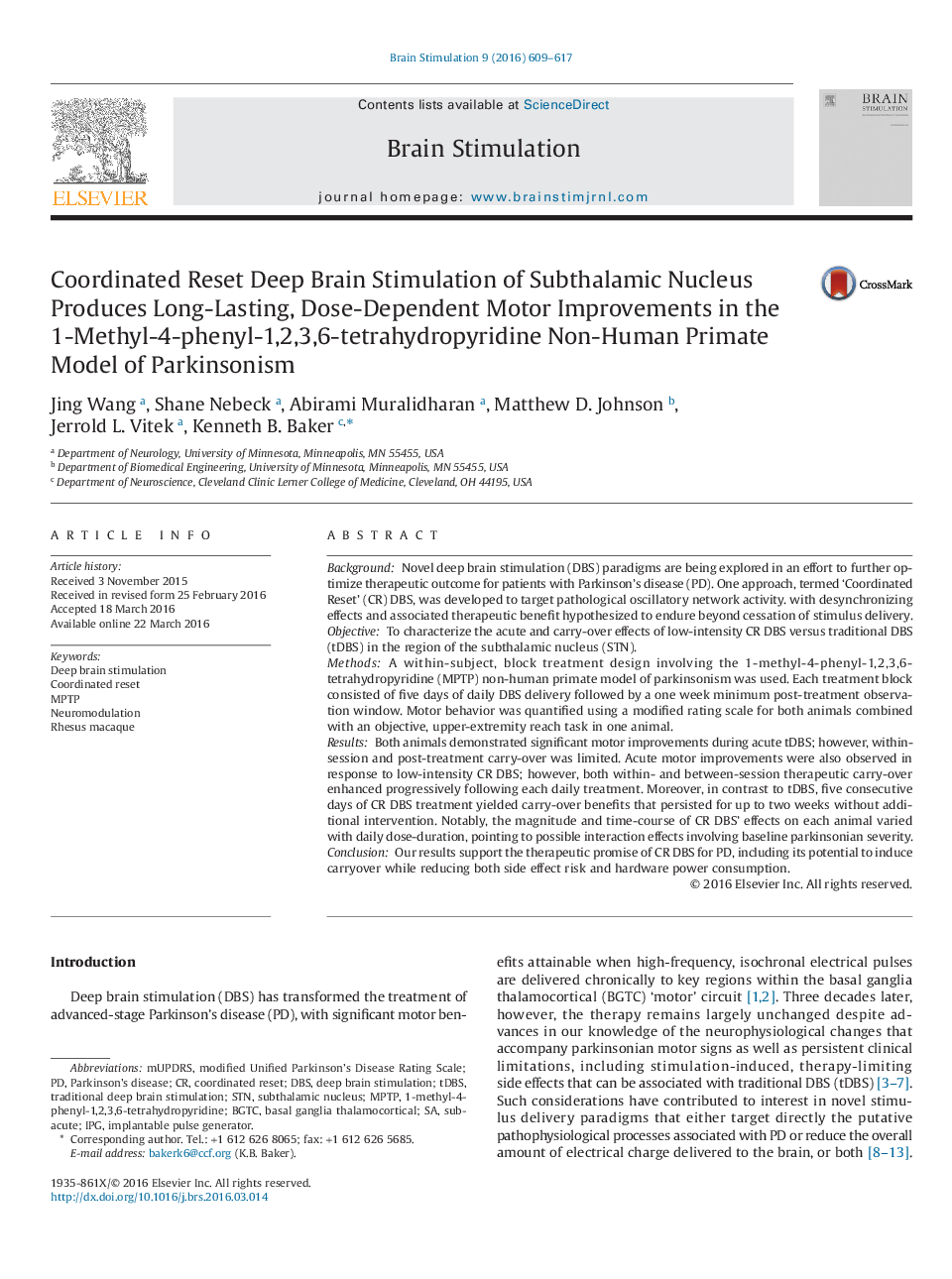| Article ID | Journal | Published Year | Pages | File Type |
|---|---|---|---|---|
| 6005196 | Brain Stimulation | 2016 | 9 Pages |
â¢Intermittent, low-intensity CR DBS yielded significant and persistent motor benefit in a parkinsonian nonhuman primate model.â¢The magnitude and persistence of the therapeutic effects of CR DBS were sensitive to daily treatment duration.
BackgroundNovel deep brain stimulation (DBS) paradigms are being explored in an effort to further optimize therapeutic outcome for patients with Parkinson's disease (PD). One approach, termed 'Coordinated Reset' (CR) DBS, was developed to target pathological oscillatory network activity. with desynchronizing effects and associated therapeutic benefit hypothesized to endure beyond cessation of stimulus delivery.ObjectiveTo characterize the acute and carry-over effects of low-intensity CR DBS versus traditional DBS (tDBS) in the region of the subthalamic nucleus (STN).MethodsA within-subject, block treatment design involving the 1-methyl-4-phenyl-1,2,3,6-tetrahydropyridine (MPTP) non-human primate model of parkinsonism was used. Each treatment block consisted of five days of daily DBS delivery followed by a one week minimum post-treatment observation window. Motor behavior was quantified using a modified rating scale for both animals combined with an objective, upper-extremity reach task in one animal.ResultsBoth animals demonstrated significant motor improvements during acute tDBS; however, within-session and post-treatment carry-over was limited. Acute motor improvements were also observed in response to low-intensity CR DBS; however, both within- and between-session therapeutic carry-over enhanced progressively following each daily treatment. Moreover, in contrast to tDBS, five consecutive days of CR DBS treatment yielded carry-over benefits that persisted for up to two weeks without additional intervention. Notably, the magnitude and time-course of CR DBS' effects on each animal varied with daily dose-duration, pointing to possible interaction effects involving baseline parkinsonian severity.ConclusionOur results support the therapeutic promise of CR DBS for PD, including its potential to induce carryover while reducing both side effect risk and hardware power consumption.
